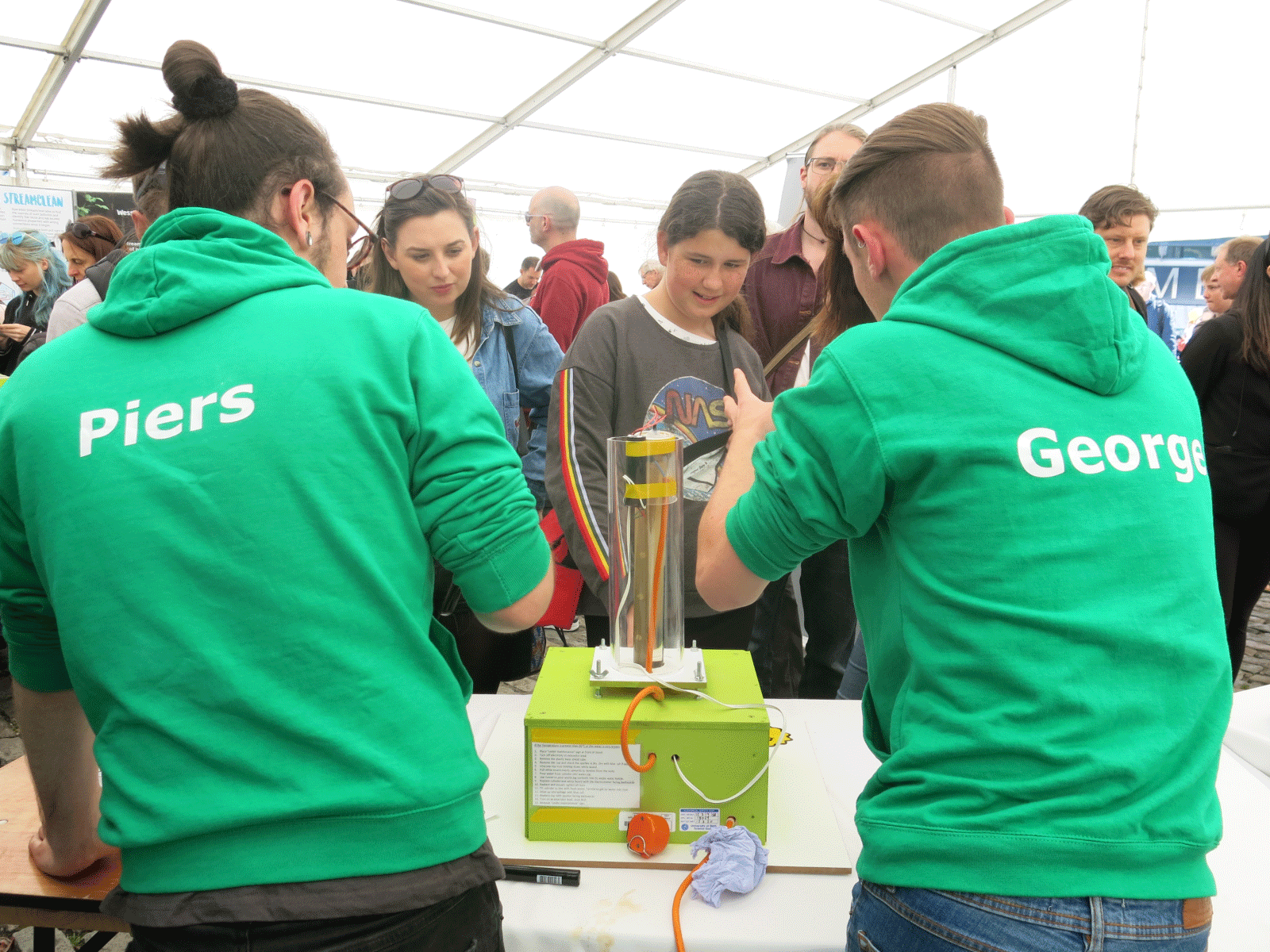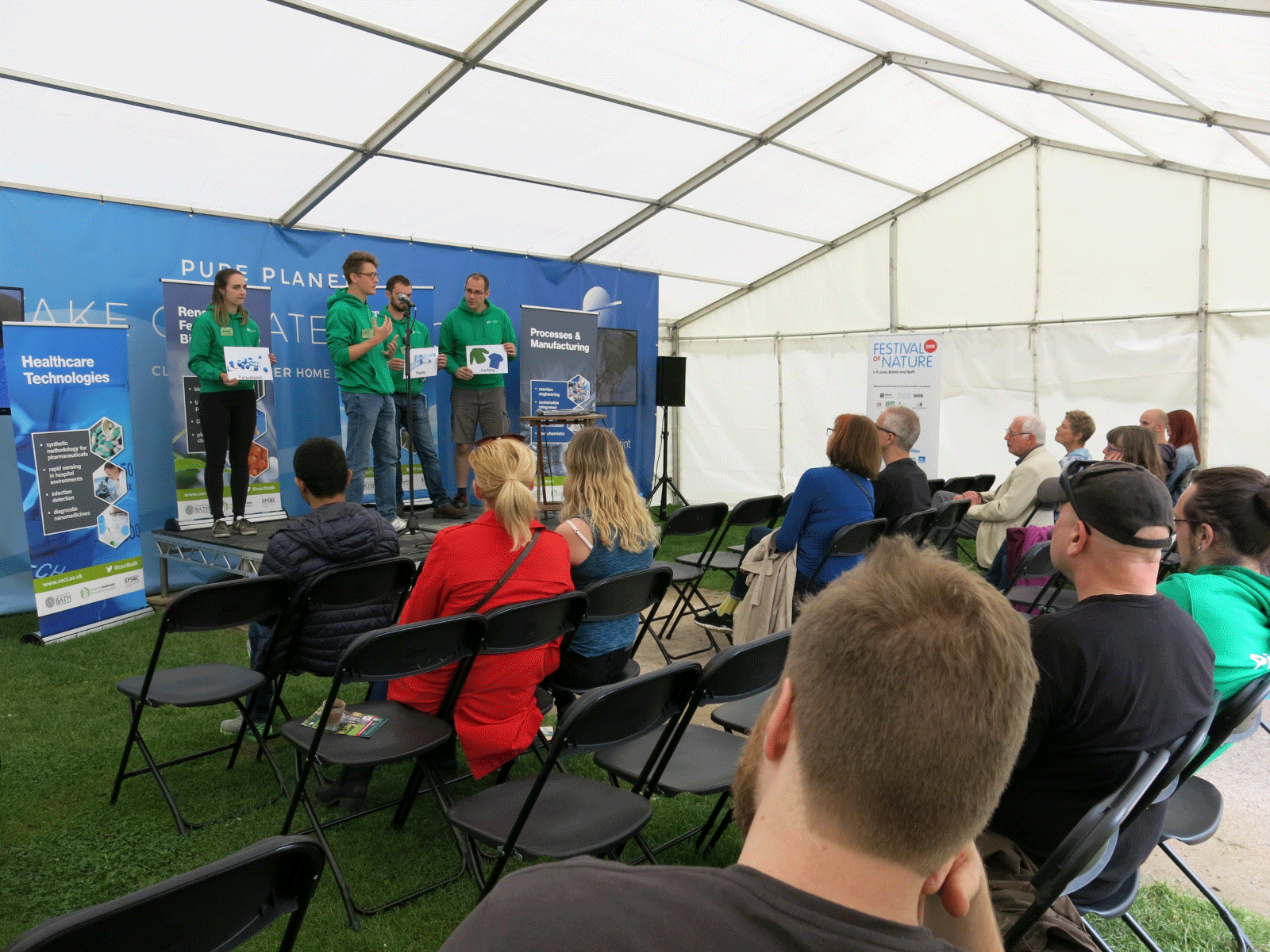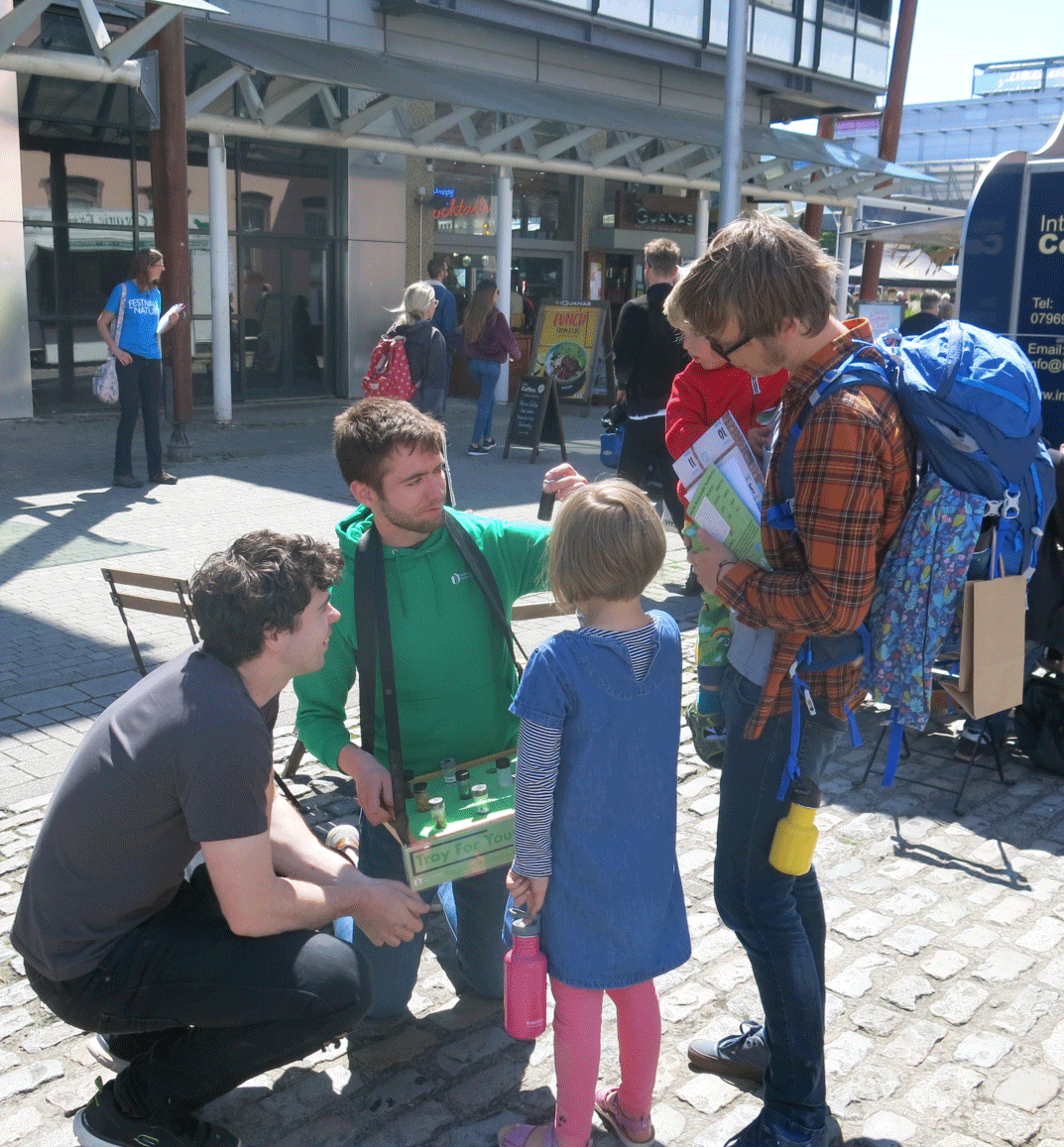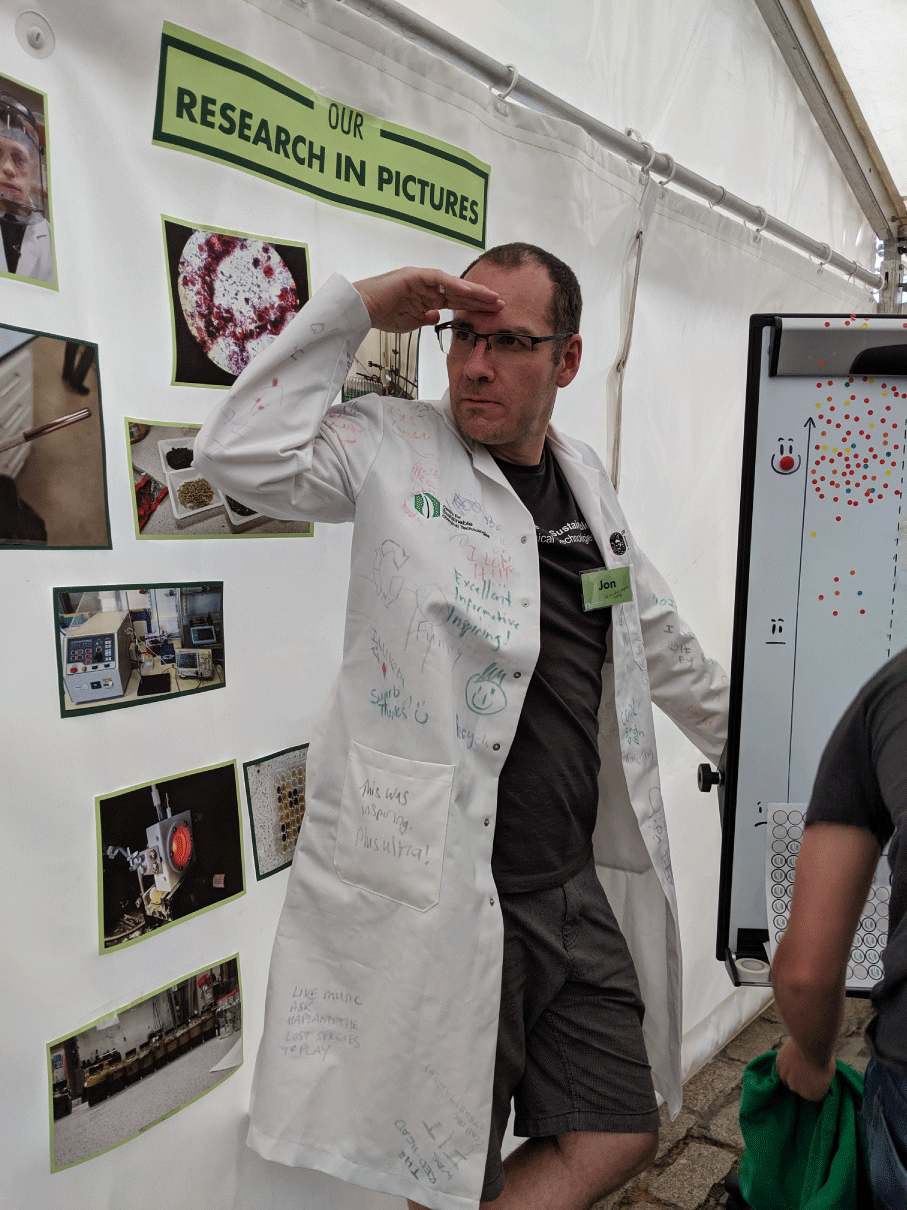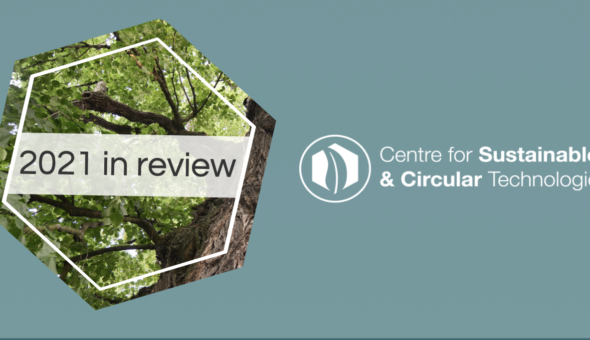Matt Cowley is a MRes student in Cohort 2018 of the CSCT. As a team the cohort planned and delivered a science festival experience to showcase the centre's research and communicate the importance of sustainable technologies. Reflecting on this process, Matt shares the group's thoughts on how to best go about building your own stand.
From the 1st to the 9th of June 2019, the centre of Bristol played host to the Festival of Nature. This included interactive exhibits and live performances from a range of institutions and giants of the natural history world. On the 8th and 9th, we, the CSCT’s own Cohort '18, deployed our homemade activities and research knowledge to talk to the festival goers about sustainability. More about the activities we made can be seen in the blog from our outing at Bath Taps into Science earlier this year. Thanks to these two experiences we thought a few reflections on the process as a whole could be useful to others, so here’s our guide to running a festival stand!
From our training provided by science communication professionals, Science Made Simple, we had three main targets to hit:
- Know your goals.
- Know your audience.
- Have a clear and compelling message.
Step 1: Know Your Goals
When designing your activities and writing scripts to accompany them you need to know what you want to achieve from any particular interaction. This goes on to inform every aspect of the design process: from the topics that your stand will focus on, to the hoodies that you wear on the day. We wanted to inform our audience about some of the world issues that the CSCT is trying to tackle: why we want to deal with them in the first place, and how we are going to do it.
Left: Piers and George talk about how we can make a clean fuel from water, hydrogen. Right: Jack, Emma, Calum, and Jon give a talk about the centre's research followed by a Q&A.
Step 2: Know Your Audience
Almost as important, and directly leading from the above, is factoring the human element of the equation: the audience themselves. Different elements of your stand will appeal to different age groups, and your explanation of the science demonstrated will need to vary depending on the scientific background of the person you are communicating with. As science festivals are mainly attended by families with young children, we built activities such as the ‘Fate of Plastics’ and the ‘Green Hydrogen Challenge’ that would capture their attention and lead to interesting conversations about the ideas behind the games.
Step 3: Have a Clear and Compelling Message
The final step might be the most key on the day. All your careful thinking and research into what you want to achieve, and who you’re going to be talking to, can go to waste if you aren’t telling a compelling story! An easy way to make any research topic more interesting is to dive into the ‘Why’ before exploring the ‘How’. In our case for the ‘Fate of Plastics’, we wanted to talk about how our current model of single use plastics is unsustainable and results in plastic waste accumulating and harming the environment. We discussed how the majority of our waste is sent to landfill still, and linked this to CSCT research on new plastics and processes that can be incorporated into a circular economy: meaning we can recover and reclaim valuable resources from our waste instead.
Left: Stuart and I show off different kinds of renewable feedstocks that the centre is researching. Right: Jon looks to the future of sustainable research dressed in a lab coat with feedback from festival goers on.
Cohort 18 had a great time at the Festival of Nature and we talked to a wide range of people about plastics, renewable feedstocks, and energy storage. We enjoyed sharing the projects we'd been working on in our MRes year with other people, and it helped us to take a step back and get some perspective on the context and value in what we do. Having a clear set of goals when approaching this challenge also assisted in delivering an experience we were really proud of. We hope the above advice gives some insight into how science festival stands are planned and run - or could even help out a fellow science communication enthusiast! Cohort 18 signing out.
Respond

